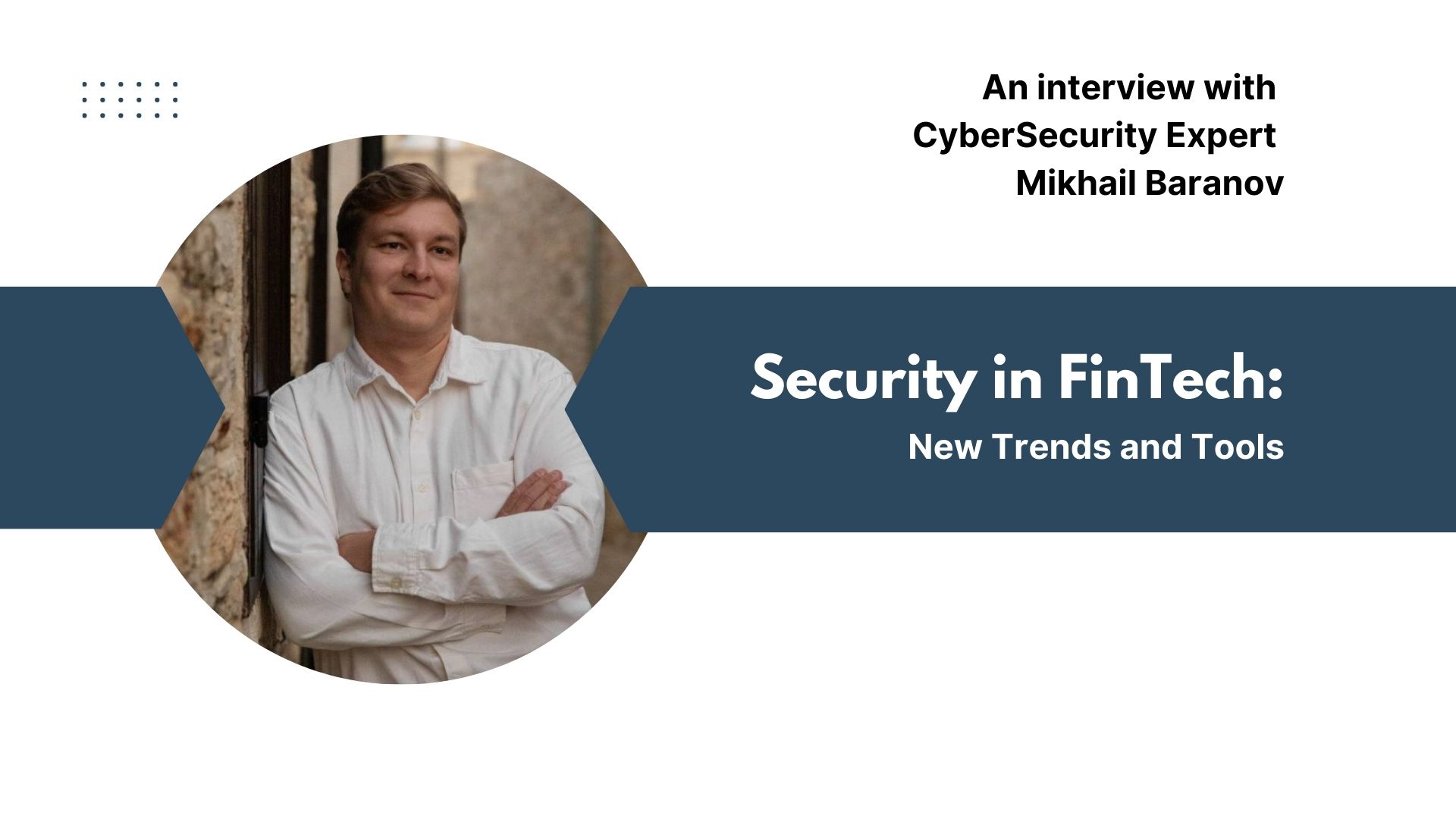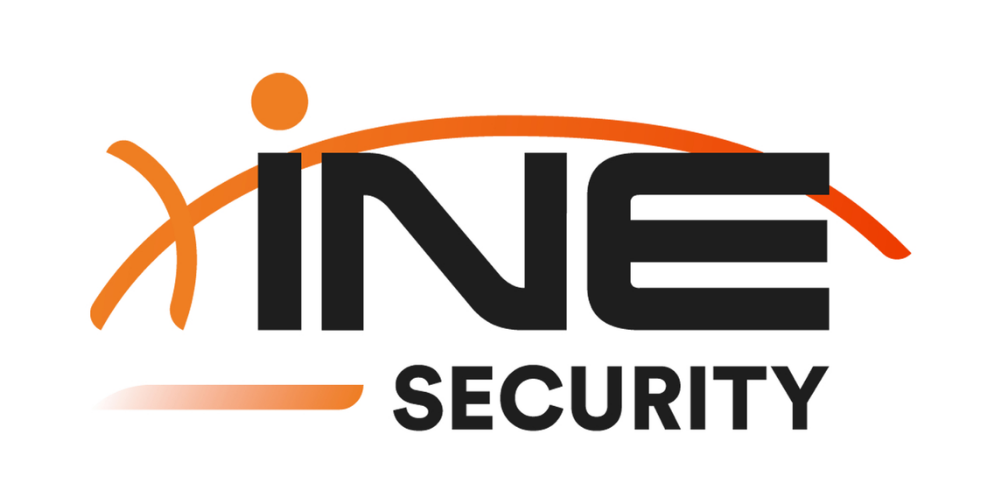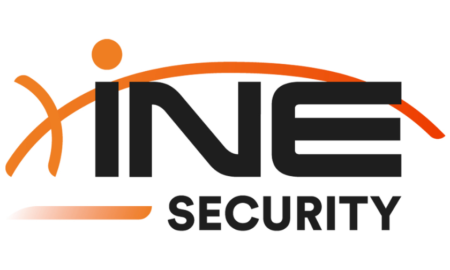Mikhail Baranov is at the forefront of developing key technological areas that impact nearly every person on the planet—security and finance. As a cybersecurity expert in the financial sector, he has been on a mission to simplify financial transactions for end users while preventing malicious actors from exploiting emerging vulnerabilities in the rapidly evolving fintech industry. Throughout his career, he has taken pride in safeguarding over $500 million in financial transactions by leveraging novel frameworks, automation, and proactive risk mitigation strategies.
In this interview, Mikhail shares his insights on the evolving threat landscape in fintech, from precision attacks and AI-driven cyber threats to regulatory pressures and the necessity of automation. He provides a strategic roadmap for fintech firms to enhance their security posture, explores the challenges of regulatory compliance, and examines the impact of AI and machine learning in strengthening cybersecurity operations.
Join us as we dive deep into the state of fintech security with one of the industry’s leading voices, uncovering the best strategies to protect financial assets in an increasingly hostile digital world.
How have cybersecurity threats evolved in the fintech sector over the past few years?
The fintech cybersecurity environment has undergone a fast and deep transformation in recent years. As a CyberSecurity Lead, I have seen firsthand how adversaries have shifted from broad attacks to highly sophisticated and targeted operations. To make things more complicated, the increasing adoption of smart devices has amplified the “power” of attackers, making targeted attacks like DDoS even more effective. As it stands, I would like to split the evolution into five main streams:
1. The Rise of Precision Attacks and Advanced Persistent Threats (APTs)
Previously, many fintech organizations primarily dealt with generic threats such as phishing emails, simple malware, and brute-force attacks. Today, cybercriminals spend months conducting reconnaissance, mapping an organization’s digital infrastructure to identify not just network vulnerabilities but also weaknesses in third-party integrations. I have personally encountered cases where APT groups exploited vulnerabilities in seemingly harmless API endpoints used for customer authentication, leading to deep intrusions into internal systems and causing major disruptions and outages. Attackers are no longer “casting a wide net”—instead, they are customizing their approaches to bypass even the most robust multi-layered defenses.
2. The Double-Edged Sword of Digital Transformation
The rapid expansion of fintech through emerging technologies—mobile banking, blockchain, and cloud infrastructures—has dramatically increased the attack surface. While these innovations fuel growth and enhance the customer experience, they also introduce new, sometimes unexpected, security gaps. In a notable case, a misconfigured cloud service in a hybrid environment granted unauthorized access to sensitive transaction data, demonstrating how a single oversight in a complex system can escalate into a significant security incident.
3. The Evolution of Ransomware and Extortion Tactics
Ransomware has evolved from a simple tool for system disruption into a powerful instrument for financial and reputational extortion. Today’s attackers don’t just encrypt data; they also exfiltrate sensitive information and threaten to leak it. This “double extortion” strategy leaves fintech companies in a difficult position: even if they have secure backups, the potential exposure of customer data can severely damage trust and market reputation. I have seen organizations rethink their incident response strategies, shifting from a focus on system recovery to comprehensive crisis management that addresses both operational and reputational risks.
4. The Impact of AI and Automation
Both defenders and attackers are increasingly leveraging AI and machine learning. On the defense side, fintech firms use AI to analyze vast amounts of data, detect anomalies, and predict vulnerabilities before they can be exploited. On the other hand, cybercriminals are using machine learning to craft more convincing phishing campaigns, mimic legitimate user behavior, and even automate reconnaissance efforts. This AI-driven game of cat and mouse requires cybersecurity strategies to be just as adaptive and forward-thinking.
5. Regulatory Pressures Driving Change
Regulators across various jurisdictions have taken notice of evolving threats and have imposed stricter cybersecurity controls and incident reporting requirements. While these regulations introduce compliance challenges—especially for companies operating across borders—they also push fintech firms to invest in more resilient, enterprise-grade security frameworks. This regulatory momentum, combined with market pressures, is driving a broader industry shift toward proactive threat intelligence and continuous monitoring.
Cybersecurity in fintech has evolved from a reactive, perimeter-based approach to a proactive, intelligence-driven strategy. Today’s attackers use precise, multi-vector tactics that exploit both technological weaknesses and human vulnerabilities. To stay ahead, fintech companies must remain agile, continuously evolving their security protocols to counter increasingly sophisticated threats. Ensuring long-term business resilience is essential in an increasingly hostile digital world.
What set of tools is necessary to protect a fintech company from all major threats today?
Securing a fintech company today is a complex task that requires a multi-faceted approach utilizing a wide range of tools and practices. It is not just about detecting and responding to threats; it is also about proactively minimizing vulnerabilities through robust system hardening and access control mechanisms. Below is a detailed breakdown of the key components:
1. Perimeter Defense
Compared to medieval times, the most important aspect of each castle is its gates and entrance.
Next-Generation Firewalls (NGFWs):
Unlike traditional firewalls, NGFWs provide advanced capabilities such as intrusion prevention, deep packet inspection, and application-layer controls. These features enable them to block known threats while dynamically adapting to emerging attack methods.
Unified Threat Management (UTM):
UTM solutions consolidate multiple security functionalities—including firewalls, antivirus, content filtering, and intrusion detection/prevention—into a single platform. This integration ensures cohesive policy enforcement and simplifies security management. Cybersecurity teams spend numerous hours correlating security events from multiple sources and configuring defense systems correctly to ensure successful remediation and protection. By leveraging UTM features, cybersecurity professionals can dramatically increase efficiency.
2. Endpoint and Device Security
Endpoints are a common entry point for sophisticated cyber threats. At the same time, mobile devices are increasingly targeted by malicious actors due to their growing use.
Endpoint Detection and Response (EDR):
EDR solutions continuously monitor endpoint activities, analyze behavior patterns, and detect anomalies in real time, allowing rapid threat mitigation. Nowadays, cybersecurity has shifted its focus to API and cloud security, but endpoint protection remains one of the fundamental “bricks” in building a robust security architecture.
Mobile Device Management (MDM) & Secure Access Service Edge (SASE):
With mobile banking and remote work on the rise, securing both corporate-owned and personal (BYOD) devices is critical. MDM solutions, combined with SASE frameworks, help enforce security policies across all devices, regardless of location. Device management has been one of the hottest topics in recent years. With the global adoption of WFH (Work From Home) and WFA (Work From Anywhere) policies, it has become a mandatory requirement to allow access to corporate resources only for secured and compliant devices, reducing the risk of compromise due to a lack of basic security hygiene.
3. Identity and Access Management (IAM)
Ensuring that only the right individuals have appropriate access to systems and data helps prevent unauthorized access, reduce insider threats, and strengthen overall cybersecurity.
Multi-Factor Authentication (MFA) & Zero Trust Architecture (ZTA):
A Zero Trust approach ensures that every access request undergoes strict verification, reducing the risk of unauthorized access—even if credentials are compromised. Over the past several years, ZTA has become a vital part of organizational security.
Privileged Access Management (PAM):
PAM solutions limit, monitor, and control access to high-privilege accounts, mitigating the risks of insider threats and credential misuse. Hackers frequently target employees with elevated privileges; if such an account is compromised, PAM ensures that access to critical resources is not granted without additional checks and procedures.
4. Security Information and Event Management (SIEM) & SOAR:
SIEM systems centralize log data from multiple sources, providing real-time visibility into security events. When paired with SOAR, these platforms automate routine threat responses, reducing reaction time and improving efficiency.
5. Cloud Security and DevSecOps
Cloud Security Posture Management (CSPM) & Cloud Access Security Brokers (CASB):
Given fintech’s reliance on cloud environments, these tools continuously monitor cloud configurations, ensuring security and compliance while detecting misconfigurations and unauthorized access.
DevSecOps Tools:
Integrating security within the software development lifecycle is crucial. Tools for static and dynamic application security testing (SAST/DAST) and container security help identify vulnerabilities early, ensuring secure code before deployment. SSDLC (Secure Software Development Life Cycle) is now essential for the secure development of products.
6. Vulnerability Management
Vulnerability Scanning and Penetration Testing:
Automated scanning tools and regular penetration tests help identify weaknesses before attackers can exploit them. This approach significantly reduces the probability of a vulnerability or defect in software being abused. By establishing proper vulnerability management, organizations ensure their environment meets security baselines and lowers the risk of a breach.
7. Infrastructure and System Hardening
While security tools are vital, a resilient system must be fundamentally secure by design. Hardening involves:
Configuration and System Hardening:
Applying strict security configurations across operating systems, databases, and applications helps reduce unnecessary services and open ports, minimizing the attack surface. The fewer weak points we have, the better.
Patch Management:
Timely application of security patches is critical. Automated patch management ensures that vulnerabilities are addressed before they can be exploited. This is commonly established as part of vulnerability management.
Access Controls and Least Privilege:
Enforcing strict access control policies and operating under the principle of least privilege helps contain breaches when they occur. Each role within the organization must have a strict list of permissions, and any deviations should be reported and investigated.
Container and Virtualization Hardening:
With fintech companies increasingly adopting containerized applications and virtual environments, implementing security best practices—such as secure container configurations and continuous image scanning—is essential. A strong recommendation is to use a unified and secure image build, such as Alpine, to ensure only required services are installed and in use.
In Summary
There is no single “silver bullet” for fintech cybersecurity. A strong defense relies on a layered security ecosystem that protects networks, endpoints, and cloud environments while enabling real-time monitoring and rapid response. Equally important is a proactive system-hardening strategy to reduce vulnerabilities from the outset. By combining these security technologies with best practices in infrastructure hardening and continuous risk management, fintech companies can maintain customer trust in an increasingly hostile digital landscape.
What role does a Security Operations Center (SOC) play in the cybersecurity strategy of a fintech company?
A Security Operations Center (SOC) is the central pillar of a fintech company’s cybersecurity strategy. It provides continuous, real-time monitoring across all digital assets—from networks and endpoints to cloud services. The SOC leverages technologies like SIEM, with advanced analytics, and threat intelligence platforms to swiftly detect and respond to anomalies, ensuring that potential threats are identified and mitigated before they escalate. The SOC team plays a crucial role in identifying misconfigurations and misalignments in the technology landscape.
Beyond monitoring, the SOC plays a pivotal role in incident response and forensic investigations, minimizing downtime and preserving both operational integrity and customer trust. Its proactive threat-hunting capabilities help uncover vulnerabilities before they can be exploited, shifting cybersecurity from a reactive defense to a strategic advantage.
In essence, the SOC is more than just a security function—it is the nerve center of fintech resilience, transforming cybersecurity into an asset that aligns with broader business objectives.
What are the key components of an effective SOC for fintech organizations?
An effective SOC for fintech organizations is built on three core pillars—people, process, and technology—that together drive rapid detection and response while ensuring minimal business disruption.
Continuously Evolving Team:
A dedicated group of security analysts and incident responders should always stay at the forefront of emerging technologies and modern threats. The SOC will never be static again, as evolving threats sometimes require in-depth knowledge of applied technologies like containerization. Their expertise is essential for interpreting alerts, making informed decisions, and coordinating with business units. With that said, the SOC team must have a dedicated budget for training and continuous skill development.
Processes:
Well-documented incident response playbooks and escalation paths ensure that any threat is quickly contained and remediated. Regular drills and cross-department communication keep everyone aligned with business risks and requirements.
Technology:
A modern and robust tech stack is essential for SOC success. This includes:
- SIEM Systems: For real-time log aggregation and correlation.
- SOAR Tools: To automate routine responses, speed up incident resolution, and improve efficiency.
- EDR Solutions: For continuous endpoint monitoring and rapid isolation of threats.
- Threat Intelligence: Integration of external and internal data to proactively identify and mitigate emerging risks.
How should fintech firms approach building an SOC—should they develop it in-house or use external services?
Fintech firms must tailor their SOC strategy to their size and resources. For smaller organizations, building an in-house SOC initially can be advantageous as it ensures deep integration with the business and greater control over critical decisions, leading to higher ROI. However, recognizing resource limitations, it can be wise to complement this setup with external managed services to relieve the workload from SOC experts and allow them to focus on service enhancement. In this arrangement, your in-house SOC operates as L3 engineers—handling strategic analysis and complex incident resolution—while an external partner covers L1 and L2 tasks such as round-the-clock monitoring and initial triage.
It is vital to have a proper toolset, well-defined processes, and high-quality resources (e.g., log quality) before introducing an external SOC. Otherwise, the number of false positives and the response quality may not meet desired levels and expectations.
For larger organizations, a hybrid model is often the best approach. A dedicated internal SOC team can focus on high-level threat analysis, compliance, and bespoke incident management, while managed services provide scalable, continuous monitoring and rapid response capabilities. This dual-layer strategy optimizes resource allocation and ensures comprehensive, multi-tiered protection across the entire operation.
In Summary, The SOC model depends on a company’s size, key competencies within technology and security, and overall maturity. Smaller firms may start with an in-house setup augmented by external support for lower-tier functions, while larger organizations can effectively deploy a hybrid model to balance control, expertise, and scalability.
What is rate-limiting and how does it help mitigate bot attacks and fraudulent actions?
Rate-limiting is a fundamental control mechanism that restricts the number of requests a user or system can make to an API or service within a specific time frame. As someone who has architected security solutions for financial institutions over the years, I can attest that rate-limiting is not just about preserving resources—it’s a strategic tool to prevent abuse and mitigate risks before they materialize.
How It Works:
Imagine you set a policy where an API endpoint only accepts 10 requests per minute from a fingerprinted user. This limit acts as a throttle, ensuring that any client, whether a legitimate user or a malicious bot, cannot overload your system. In practice, when a client exceeds that threshold, subsequent requests are either delayed, dropped, or returned with an error code (e.g., HTTP 429 Too Many Requests). The response depends on the case—some situations allow for simply dropping requests without affecting user experience while simultaneously adding a hurdle for attackers.
Mitigating Bot Attacks:
Automated bots are designed to execute high-speed requests to overwhelm a system. In one project, we noticed bots abusing API endpoints for an SMS gateway. By enforcing a rate-limit (e.g., limiting attempts to 3 per minute per fingerprint, which consisted of location, TLS fingerprint, etc.), we were able to quickly identify and automatically block suspicious activities. This prevented brute-force attacks and forced attackers to “leave,” giving us time to reengineer the SMS gateway logic.
Preventing Fraudulent Transactions:
Rate-limiting also plays a crucial role in protecting against fraudulent transactions. For example, if a fraudster uses automated scripts to initiate rapid, repeated transactions to exploit a promotional offer or siphon funds, a rate-limit on transaction requests can immediately throttle these attempts. In one instance, we integrated rate-limiting with our SIEM system so that any sudden spike in transaction requests triggered an alert, prompting SOAR to enable rate-limiting without requiring security personnel involvement.
Fine-Tuning for Maximum Effectiveness:
In my experience, the key is to calibrate rate limits carefully. It is essential to fully understand how your API endpoints work, how external users interact with them, and any possible limitations imposed by business requirements. It’s also important to integrate rate-limiting with your broader security ecosystem—leveraging threat intelligence, behavioral analytics, and automated response tools to not only throttle abusive behavior but also enhance your incident response strategy proactively.
How important is automation in vulnerability assessments for fintech security?
In my experience, automation in vulnerability assessments isn’t just beneficial—it’s essential for fintech security. In the era of AI and ML, automation is accelerating and allows organizations to fully unlock its potential and harness every aspect of implementation.
Fintech environments are dynamic and expansive. Automated tools continuously scan systems in real time, reducing detection time from days to mere hours. From initial scanning to delivery to the respective owner (including advice on remediation), everything can be done automatically.
Automation ensures that every system and endpoint is tested as expected through unified pipelines. Unlike manual assessments, which are prone to human error and occasionally miss vulnerabilities, automated scanning delivers consistent, reliable results—vital for keeping the company and its digital products secure.
By integrating automated vulnerability assessments, a proactive approach minimizes the window of exposure, significantly lowering the risk of breaches and protecting company assets.
Automation transforms vulnerability assessments from a periodic, reactive exercise into a continuous, proactive security measure. For fintech firms that want to avoid disruption and ensure high ROI in security, investing in automated vulnerability management is a strategic imperative. However, each leader must be cautious—before implementing automation, it is essential to define clear outcomes to avoid spending resources on automation that brings low value.
What are the key steps fintech companies should take to automate vulnerability checks effectively? Can AI and machine learning improve fintech security automation? If so, how?
From my experience, automating vulnerability checks isn’t just about deploying a tool—it requires a well-planned, integrated approach. Details vary from company to company, but the common steps are as follows:
1. Establish an Asset Inventory and Baseline:
Before you can automate, you must know what and where to protect. Each cybersecurity leader should understand that to harness automation capabilities, all assets must be covered; otherwise, the value of automation is low. Create and maintain an up-to-date inventory of all assets—networks, endpoints, APIs, and cloud services—to ensure that automated scans cover the entire attack surface. High-quality tools for this task are a must!
2. Deploy Scalable, Environment-Agnostic Tools:
Choose automated vulnerability scanners that can handle the scale and complexity of fintech environments. Consider open-source tools if your team has the expertise to fine-tune them. These tools should integrate seamlessly with your cloud platforms, CI/CD, SIEM, patch management, and other security solutions, enabling continuous monitoring and rapid remediation. Make sure the tools you choose are agnostic to the environment so that if the business decides to switch cloud providers, it won’t cause major disruptions.
3. Define and Fine-Tune Scanning Policies:
Customize scanning frequency, depth, and scope based on risk profiles and business process criticality. Adjust these configurations within your CI/CD pipelines to reflect changes in the threat landscape and ensure that false positives are minimized while the time to deliver results remains as low as possible.
4. Integrate with Incident Response Workflows:
Automation should feed directly into your incident response processes. This integration ensures that detected vulnerabilities trigger predefined actions—whether that’s immediate patch deployment or deeper manual investigation by your internal team. A great open-source tool to consider is DefectDojo—it offers numerous integrations and automated workflows and is truly collaboration-agnostic.
Should You Integrate AI and ML from the Start? Absolutely! AI and machine learning can be transformative for fintech security automation. In my extensive experience integrating these technologies early on, I’ve seen tangible benefits that significantly impact both operations and cost-efficiency.
Time Savings:
AI-driven systems process vast amounts of data in near real-time, reducing detection and response times by up to 70%. For example, while manual vulnerability assessments might take several hours, automated AI solutions can identify critical issues in minutes, enabling faster remediation.
Cost Efficiency:
By automating repetitive tasks—such as continuous vulnerability scanning and log analysis—AI significantly reduces the need for manual intervention. This not only frees up your skilled security personnel to focus on higher-priority challenges but also lowers operational costs associated with labor-intensive processes.
Reduced Manual Effort:
Automated systems handle routine checks and incident triage, effectively serving as a force multiplier for your security team. This means fewer hours spent on routine tasks and more time dedicated to strategic analysis and proactive defense measures—crucial in a fast-paced fintech environment.
Final Thoughts
Integrating AI and machine learning into fintech security automation delivers significant time savings, enhances accuracy with lower error rates, reduces costs, and minimizes the manual workload on your security team. These benefits collectively help build a more agile, efficient, and proactive security posture in today’s ever-evolving threat landscape.
What are the biggest challenges fintech firms face when meeting regulatory requirements?
In my experience, one of the biggest challenges fintech firms face is keeping up with an ever-evolving regulatory landscape while still driving innovation. Compliance requirements vary significantly by jurisdiction—think of GDPR in Europe versus NYDFS in New York. Fintech companies are constantly innovating, launching new digital banking features, or exploring blockchain technologies, but they must also meet stringent and sometimes cumbersome regulatory obligations. Finding a balance between innovation and compliance is a complex challenge for the fintech sector.
Another significant challenge lies in managing data privacy and protection. Fintech firms deal with highly sensitive financial information, and even a small misstep—such as a misconfiguration or a gap in encryption—can lead to severe penalties and a loss of customer trust. On top of that, many of these companies operate within a complex ecosystem of third-party vendors. Ensuring that each partner complies with the required security and regulatory standards adds another layer of complexity to an already intricate compliance puzzle.
Over the years, I’ve seen that one effective way to address these challenges is through the smart use of automation. Automating routine compliance checks, vulnerability assessments, and even reporting processes can save a tremendous amount of time. For example, by integrating automated tools into compliance workflows, some organizations have reduced manual tasks by over 30%, significantly lowering the risk of human error and cutting down on operational costs. However, I have yet to see a solution that effectively addresses the operational inefficiencies caused by never-ending external audits and assessments.
To sum up, navigating a dynamic regulatory environment, balancing rapid innovation with the need for robust compliance, and managing sensitive data across a broad ecosystem—all while bearing the substantial overhead of audits and reporting requirements—remains one of the most demanding challenges for fintech firms today.
How should fintech companies approach the implementation of compliance solutions?
Based on my experience, implementing compliance solutions in fintech is best approached as a strategic, layered project rather than a one-off installation. It starts with a comprehensive risk assessment—understanding exactly what assets, data flows, and third-party interactions exist within your ecosystem. After this step is done, it is required to assess and document all the regulations the company must adhere to.This foundation clarifies your compliance obligations across different jurisdictions.
Secondly, it’s essential to integrate automation into your compliance strategy. Automated tools, enhanced by AI and machine learning, can continuously monitor systems for deviations and regulatory changes. This kind of automation allows for real-time adjustments, ensuring that compliance isn’t a static checklist but a dynamic, continuously updated process, lower probability of compliance penalty.
What I’ve seen repeatedly is that the combination of robust automation with smart integration into your existing security workflows not only slashes the time required to detect and remediate compliance gaps but also significantly reduces the error rates associated with manual reviews. In practical terms, this means that your security teams can focus on strategic risk management and innovation, rather than being bogged down by endless compliance paperwork and repetitive tasks.
Ultimately, fintech companies should view the implementation of compliance solutions as an ongoing journey—one that demands a clear understanding of your regulatory landscape, a commitment to continuous improvement, and a willingness to invest in technologies that drive both accuracy and efficiency.



































